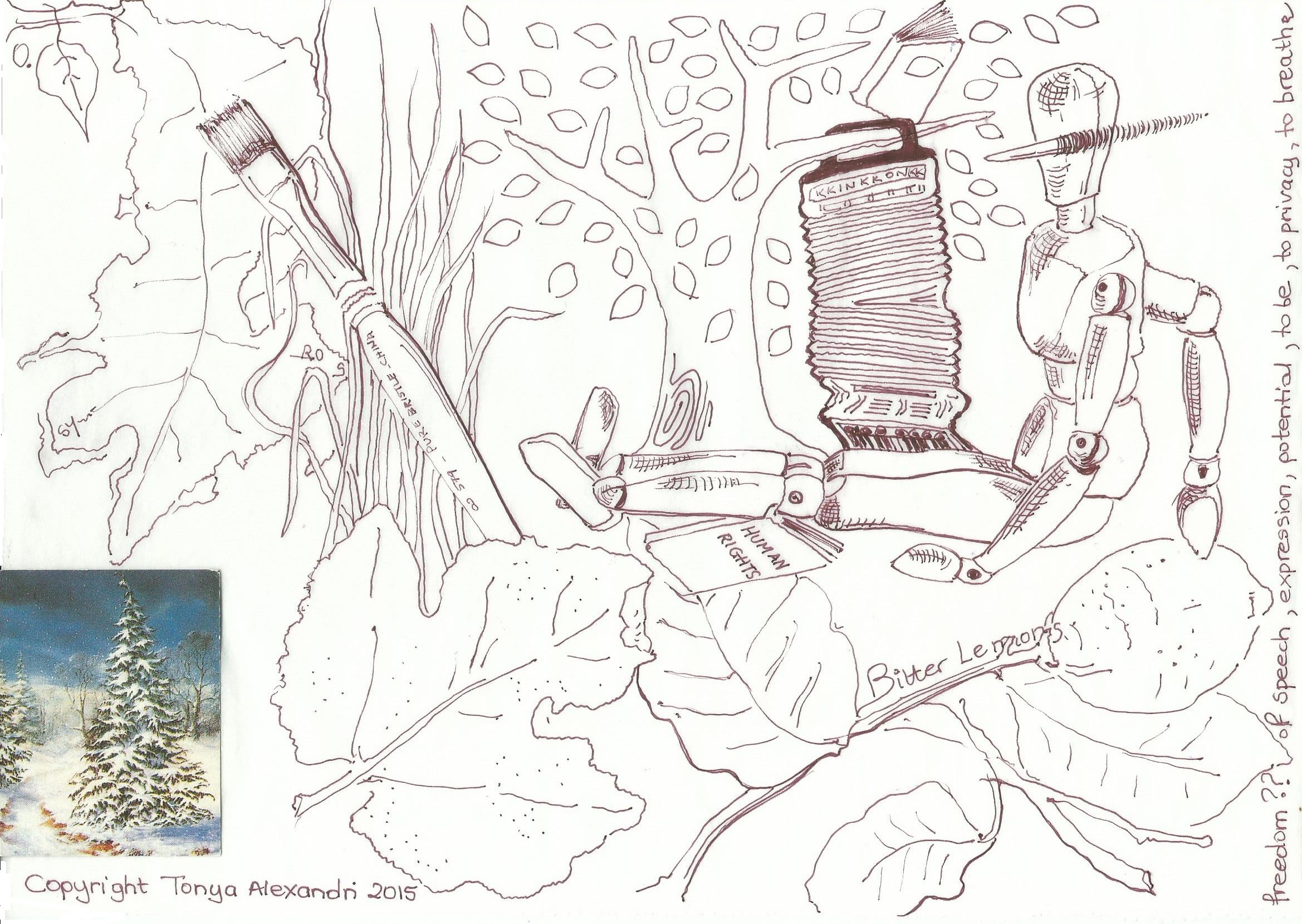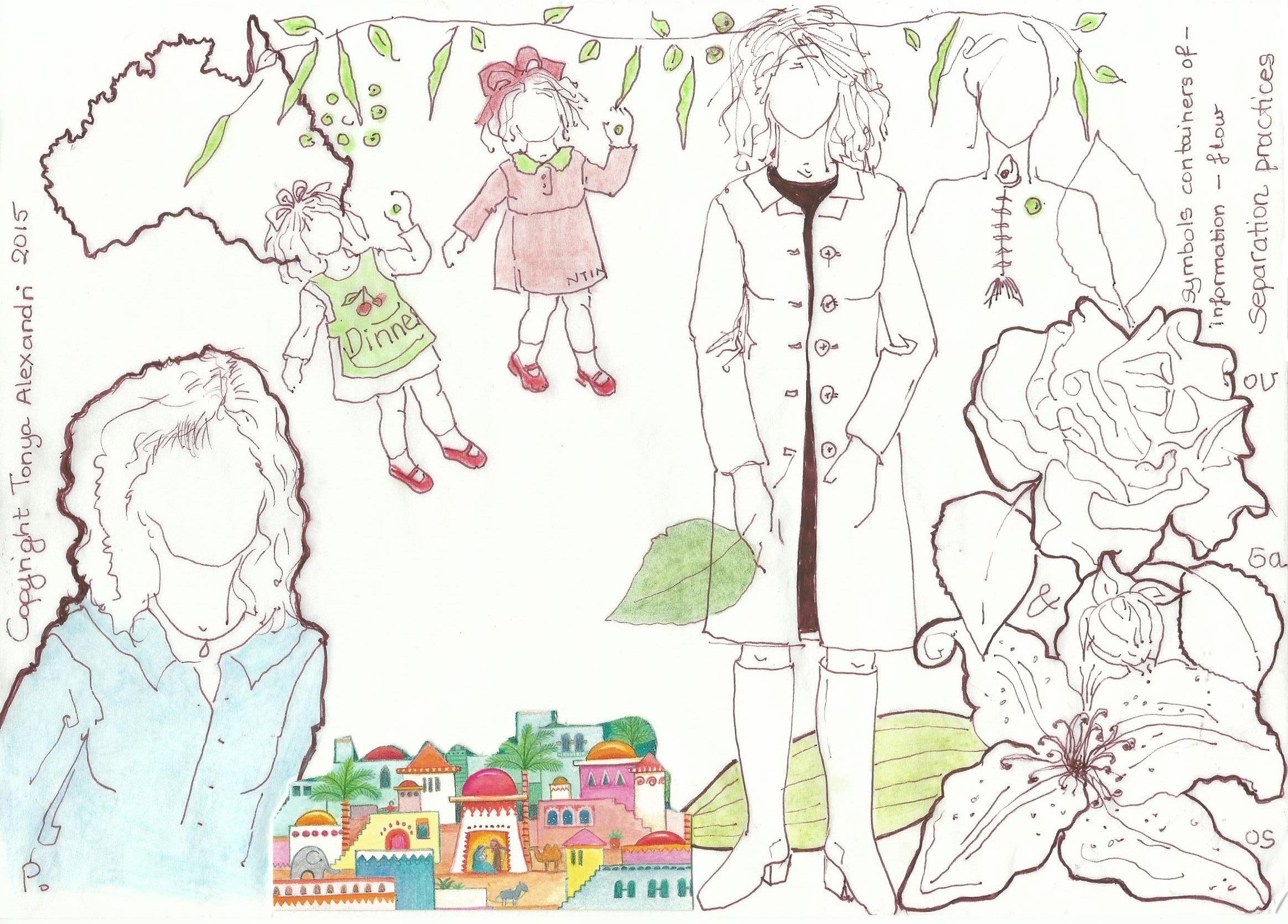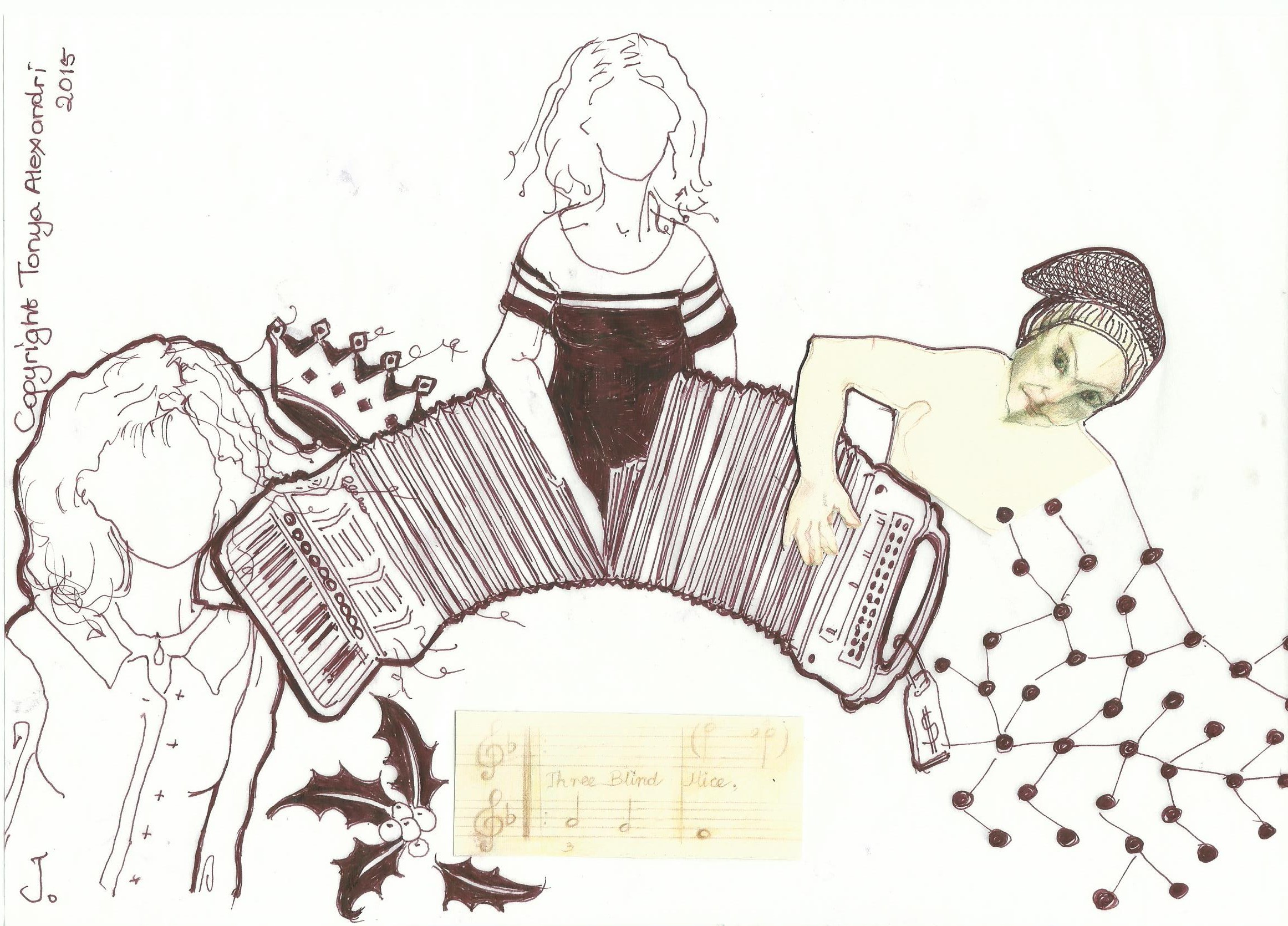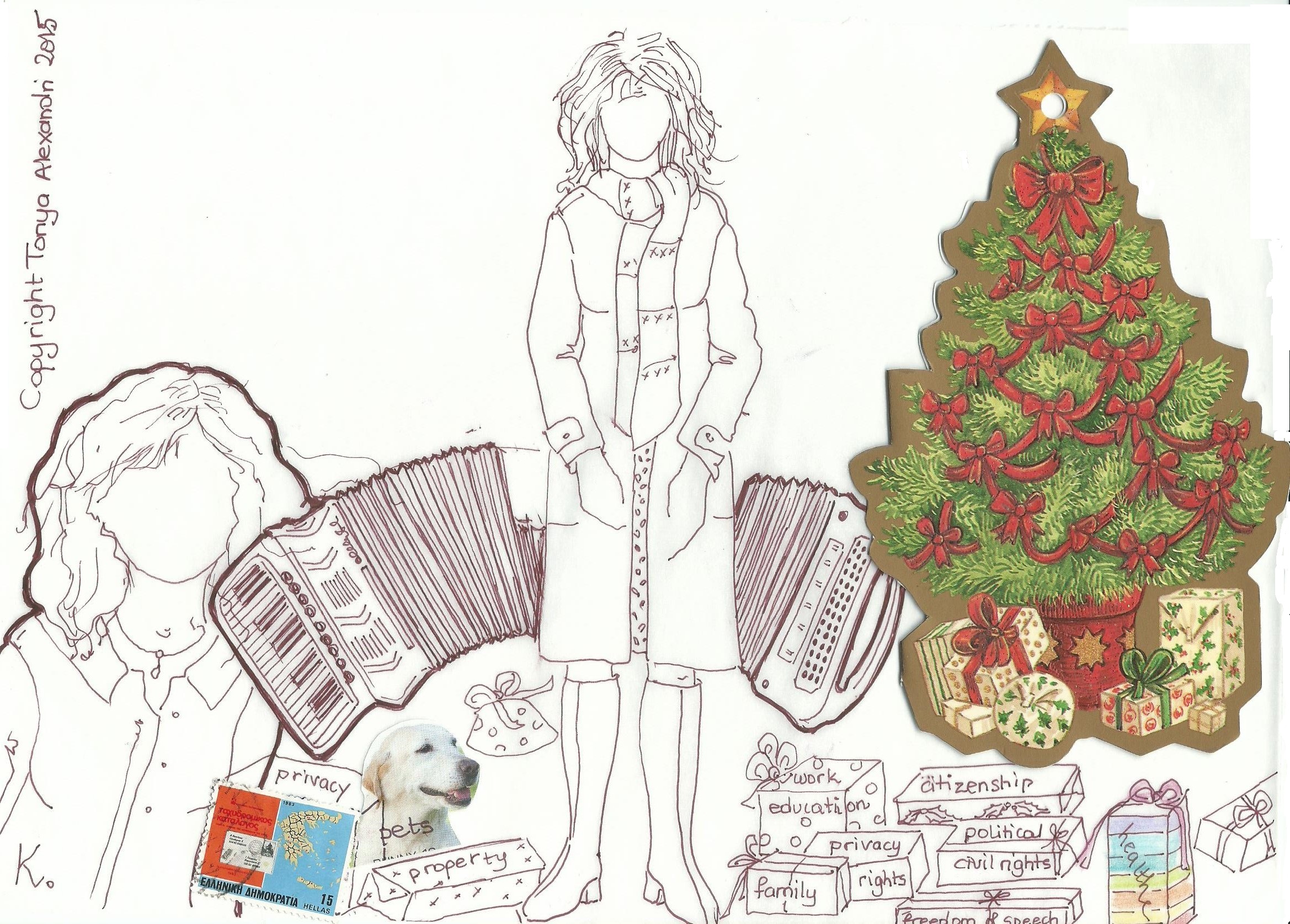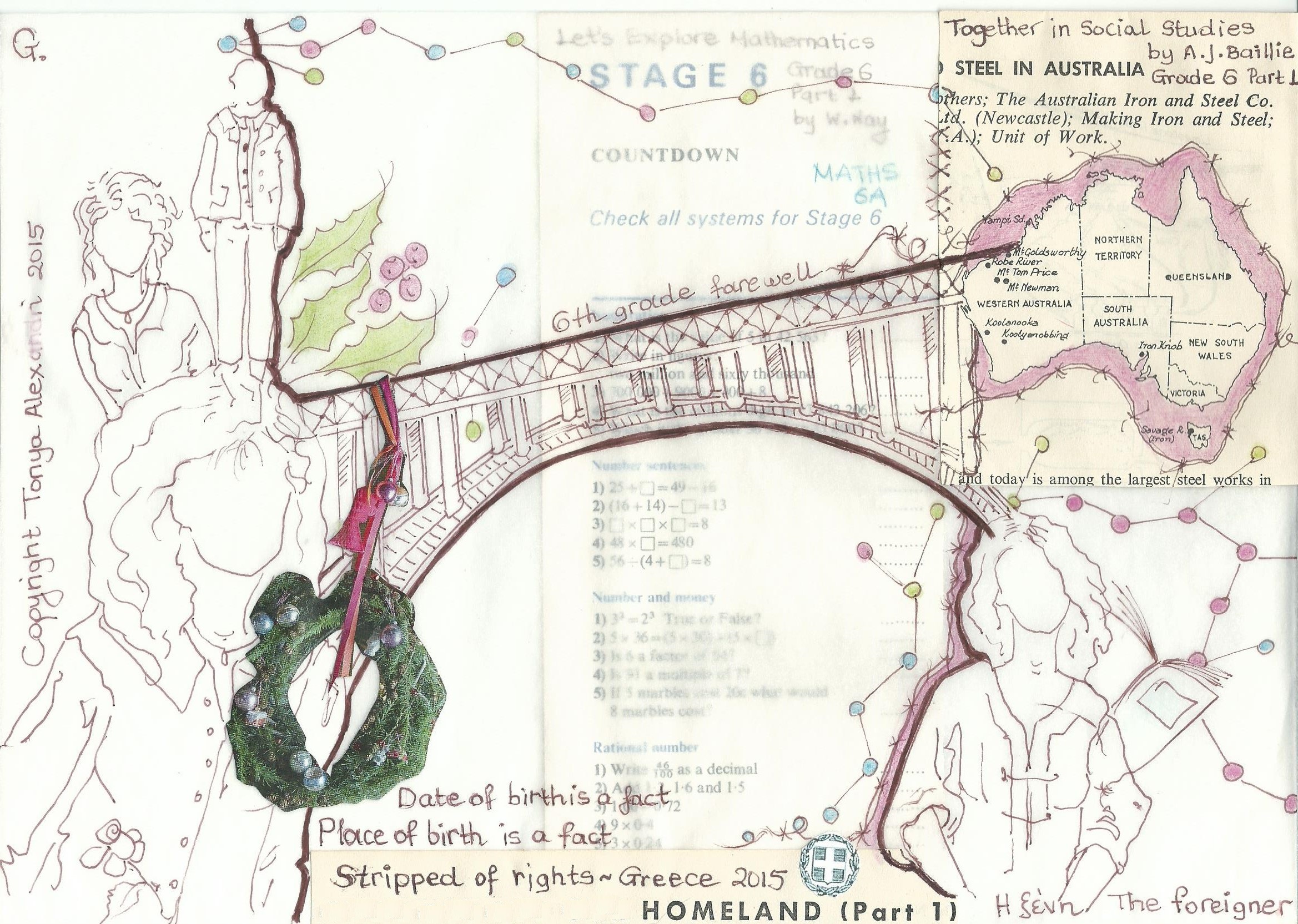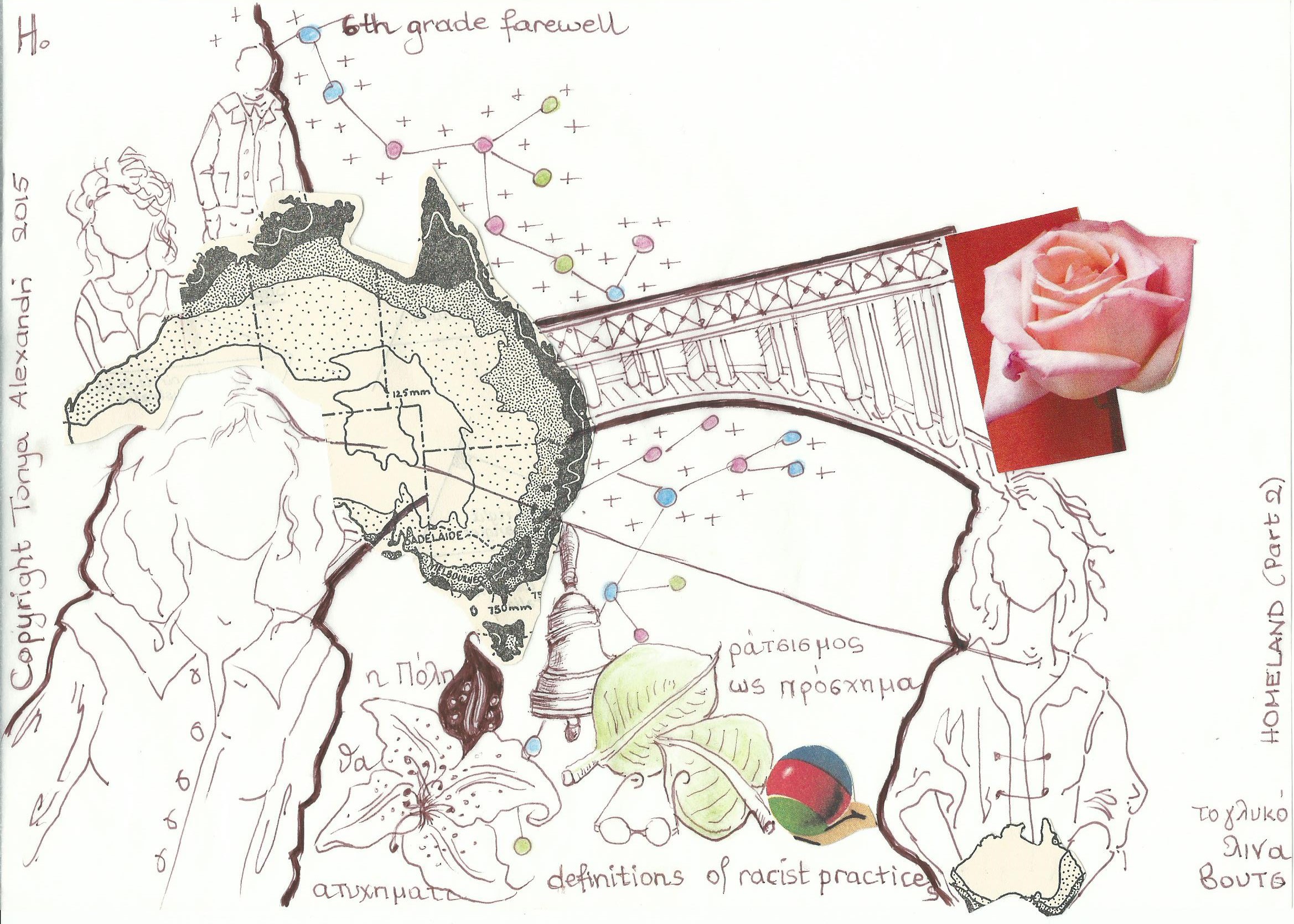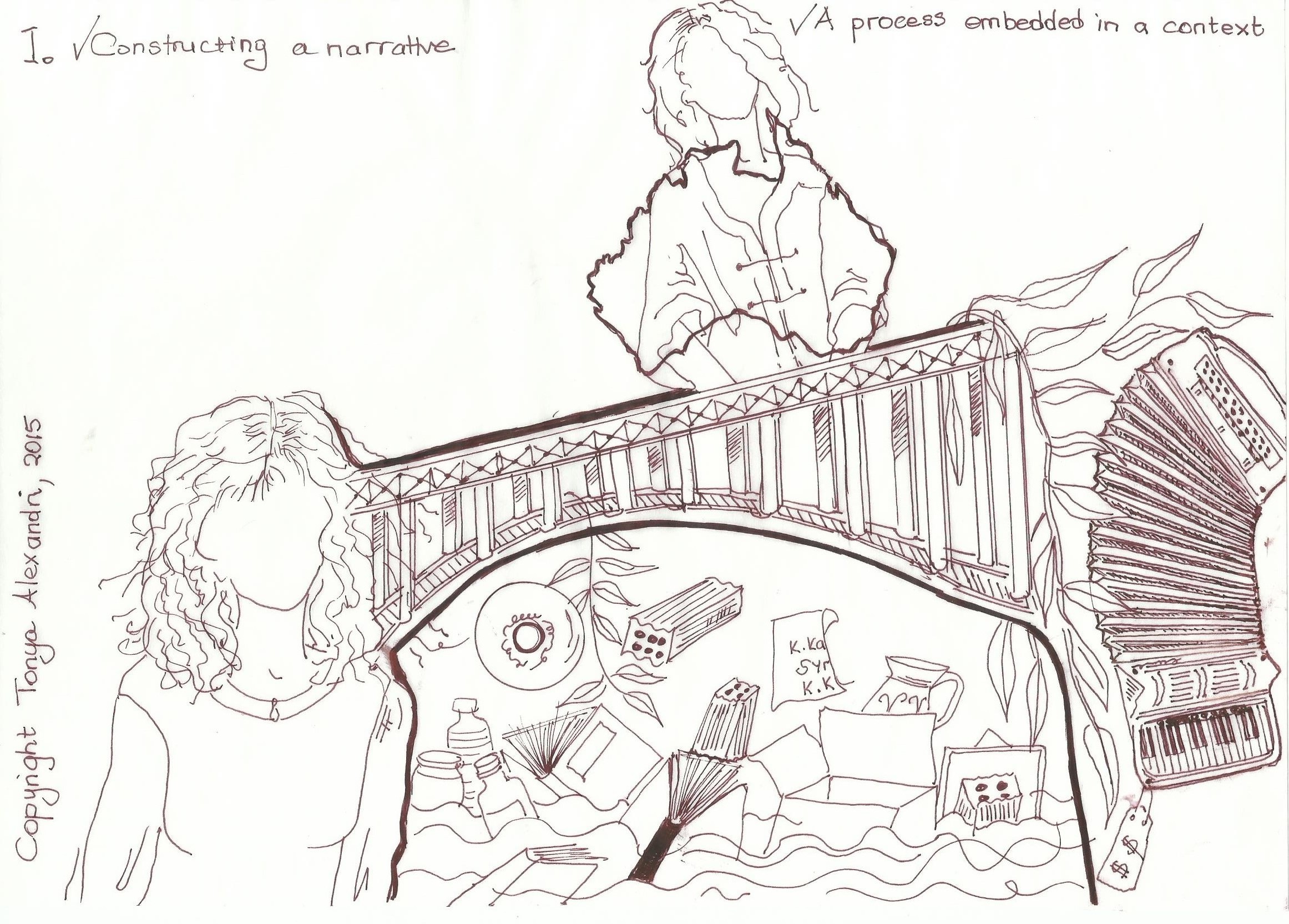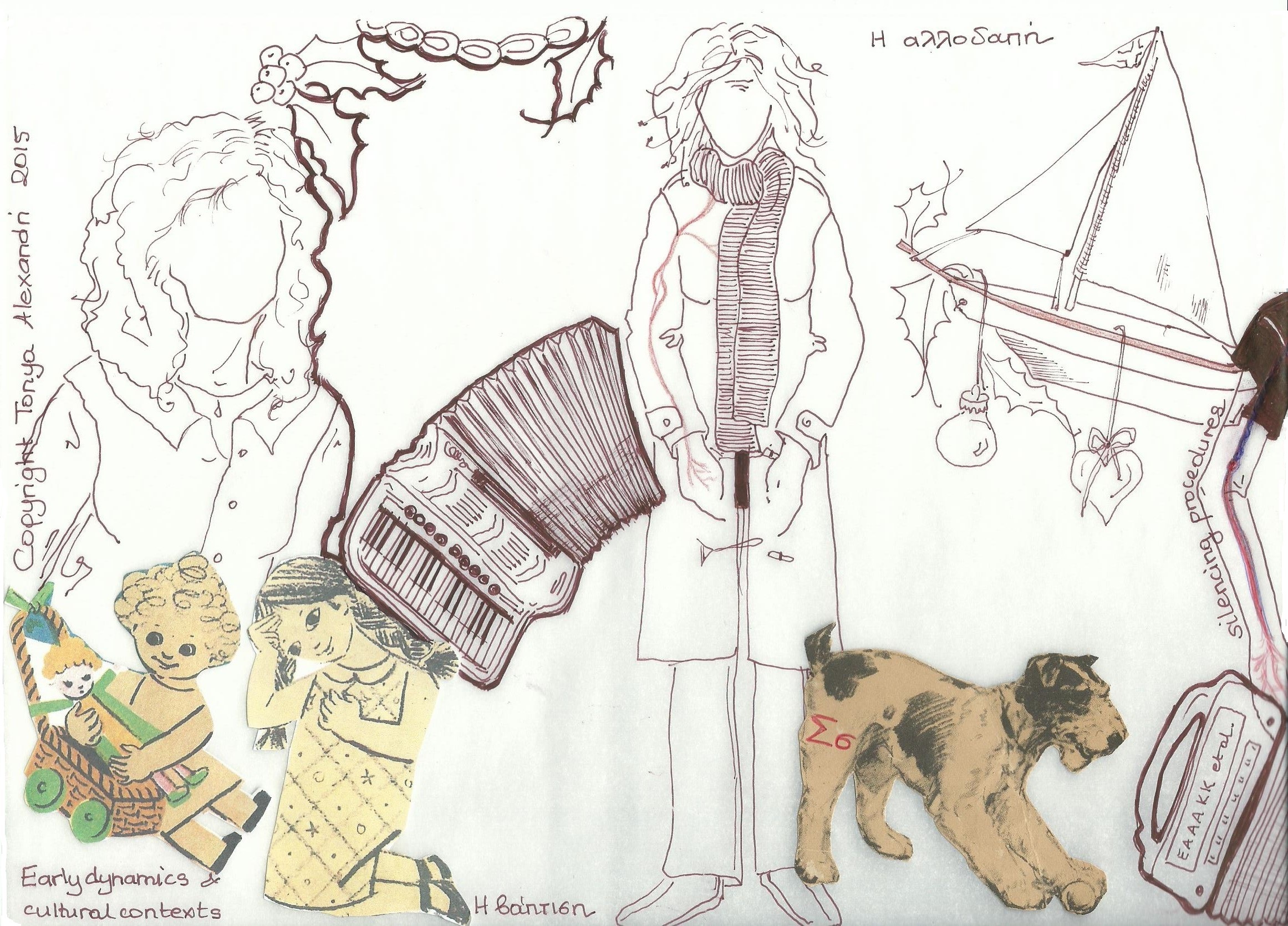
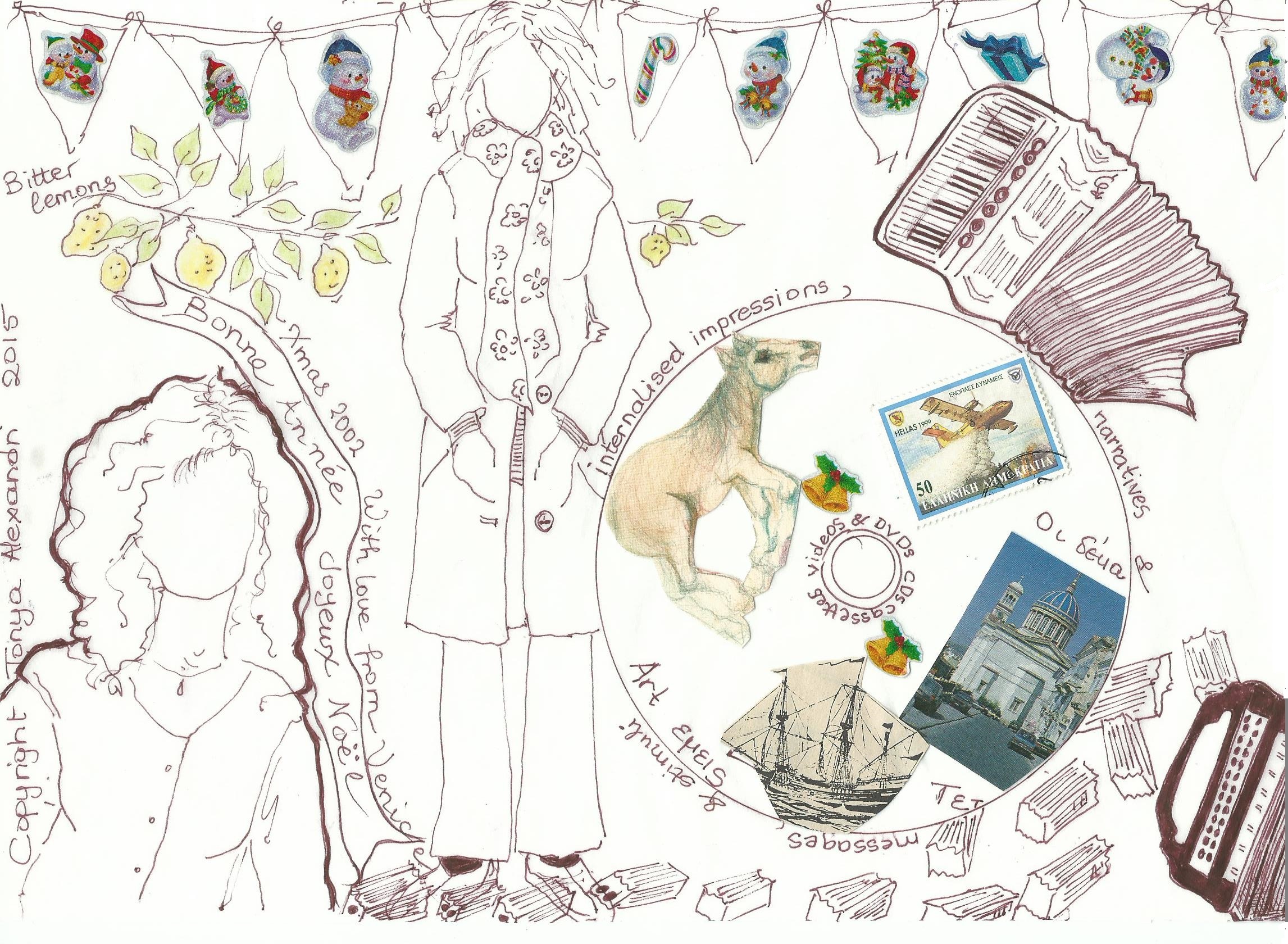 (Οι δυο εικόνες κάτω αριστερά είναι από το αλφαβητάριο της Α’ τάξης των εκδόσεων Νέα Σύνορα – Λιβάνη)
(Οι δυο εικόνες κάτω αριστερά είναι από το αλφαβητάριο της Α’ τάξης των εκδόσεων Νέα Σύνορα – Λιβάνη)
The process of constructing a narrative is our attempt to make sense of what and why something has happened. However, re constructing a life narrative usually requires time to unfold and one needs to make sense of all the different layers of memories and adaptations to traumatic events across experience. I remember reading somewhere that it may take trauma survivors about a decade to fully make sense of their trauma and be able to write a fairly coherent narrative. Survivors’ current relations and contexts, as well as, early attachment relations, will definitely shape how their narrative will develop. Also, as survivors explore and process traumatic material and experiences, often changes take place in many areas of their life, which in turn inform their meaning making and narrative. In any case, it is a long process and it takes place in stages, and with each stage greater mastery is achieved as well as deeper understanding. For all of us, not only trauma survivors, it is an ongoing process as one’s life unfolds, as changes take place and as our meaning making of our life experiences evolves.
In 2004/’05 I took up art again and it seems that all the artwork I have produced since involves exploration of similar themes and events, but the depth of understanding and the form has changed across time. It is as if each layer of memories or adaptation to trauma are represented and created in a relatively unique way each time. Initially, I created time consuming detailed pencil or ink drawings or portraits with symbols and very little colour. At the same time I engaged in fast ink and brush, and mostly black and white, expressions of emotionally charged experiences. Then Let me be included minimal drawings in colour and each image became a symbol and container of dense experience. The whole book was one level of adaptation to traumatic events and if I had been able at the time to fully unpack the images I had created I would have achieved deeper and more holistic understanding of dynamics and contexts. The next phase involved the production of numerous more densely populated pages, which were partly drawings partly collage. Then in 2014, ten years later, I created yet another set of drawings highly connected both thematically and in terms of the level of my understanding. Finally, unlike all my previous artwork my more recent products consist of very quick ink sketches and doodles as if an impatient narrative is unfolding. I also seem to need to include short texts or words in my artwork, and often my own short written texts or extracts and quotes from other people’s work accompany the drawings. This combination of images and words seem to work for me. Words and images have a ‘complementary relation’.
Furthermore, within the space of creating our narrative we gradually understand how overwhelming feelings like fear and anger, psychological defenses and past learning and top-down processes like expectations and generalisations, schemata and biases can prevent us from reaching deeper understanding and the truth. The end product, as well as, the artistic procedure, allows us to explore from a safer distance and often make unexpected discoveries. A kind of new communication takes place between the individual and the narrative, allowing one to add or deduct, change and transform, resolve and integrate aspects of experience creating a larger whole. The process of creating a life narrative also facilitates bilateral integration since both hemispheres are engaged when re constructing one’s life experience. Dan Siegel (2015) suggests that ‘the non-worded world of the autobiographical right hemisphere integrates with the worded world of the factual left hemisphere, resulting in bilateral neural integration and integrated interpersonal communication’. As one’s narrative unfolds aspects unseen before will become apparent and desensitisation to experiences and emotions will inevitably take place. However, clarity comes at a price and often losses will need to be revisited and re-assessed. Moreover, the process of re-constructing our narrative may bring home a liberating, deeper realisation that, at least part of the trauma is in the past, and also that the process is inherently connected to moving towards resolution.
The construction of narrative can be facilitated by many forms of expression, either separately or in combination as described above. It can involve verbal and written language, but also art, photography and music and virtually any means of expression one has the ability or desire to use. It can take the form of writing a journal, a story, poems or a memoir. It may involve creating paintings or drawings or sculpting. It may simply involve telling someone and/ or recording one’s story. It can be a more linear narrative like a written story or less linear like a drawing or painting. Similarly, art can be symbolic and abstract or more descriptive and realistic. Symbols and metaphors are often used and may become containers of clusters of experiences or emotions. Also, symbols and metaphors convey emotional experience in a powerful way and can greatly facilitate the expression of trauma. One symbol or image alone may tell a longer story with greater economy and precision.
Finally, as a species when good or terrible things happen to us we feel the urge to tell. When we witness injustices or experience pain some of us feel the need to tell. There are narratives of human experience since the first cave drawings or perhaps even earlier which have yet to be discovered. Today we continue to tell stories in many forms and through many different media. Once trauma survivors can put their experience in words or pictures, a shift takes place in their life and their environment and dynamics inevitably change. Some survivors will decide to fight for restoration and deal with violations of rights, especially if victimization is ongoing and political and civil rights are violated. They may seek legal advice and support. All these procedures are inherently linked with their new meaning making and construction of narrative. In any case, whether survivors choose to break the silence and go public or not, all those interacting with them and their narrative will change to some extent or other. As each survivor heals and breaks the silence, a little more healing and some small change takes place in the world.
Tonya Alexandri – December 9th, 2015

